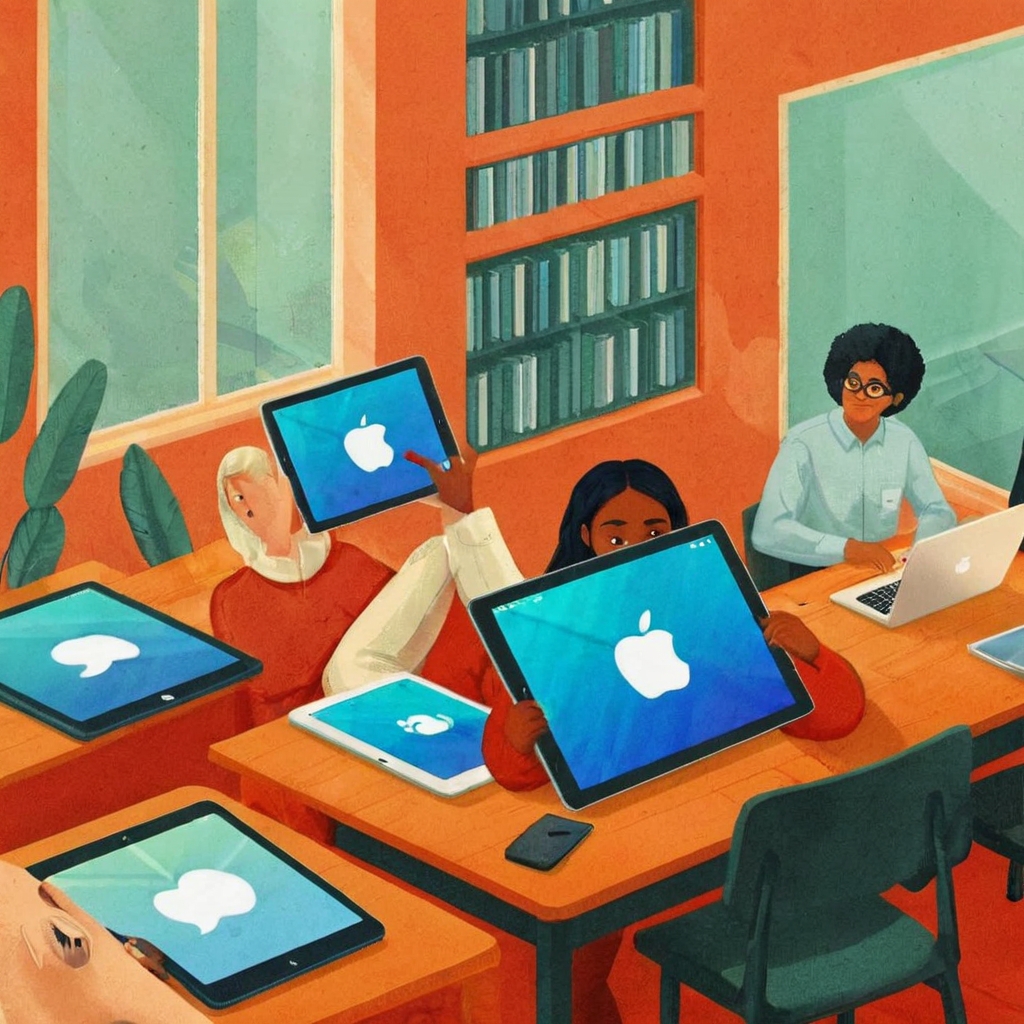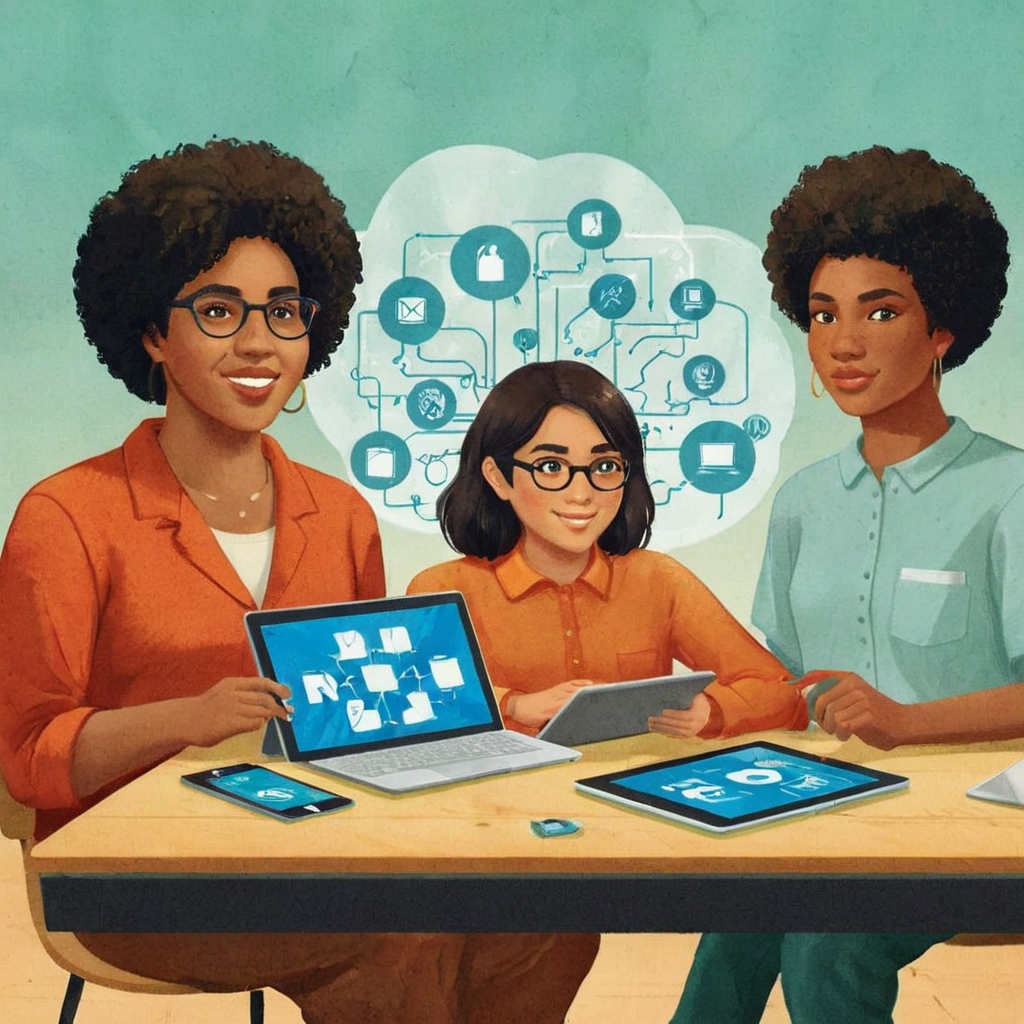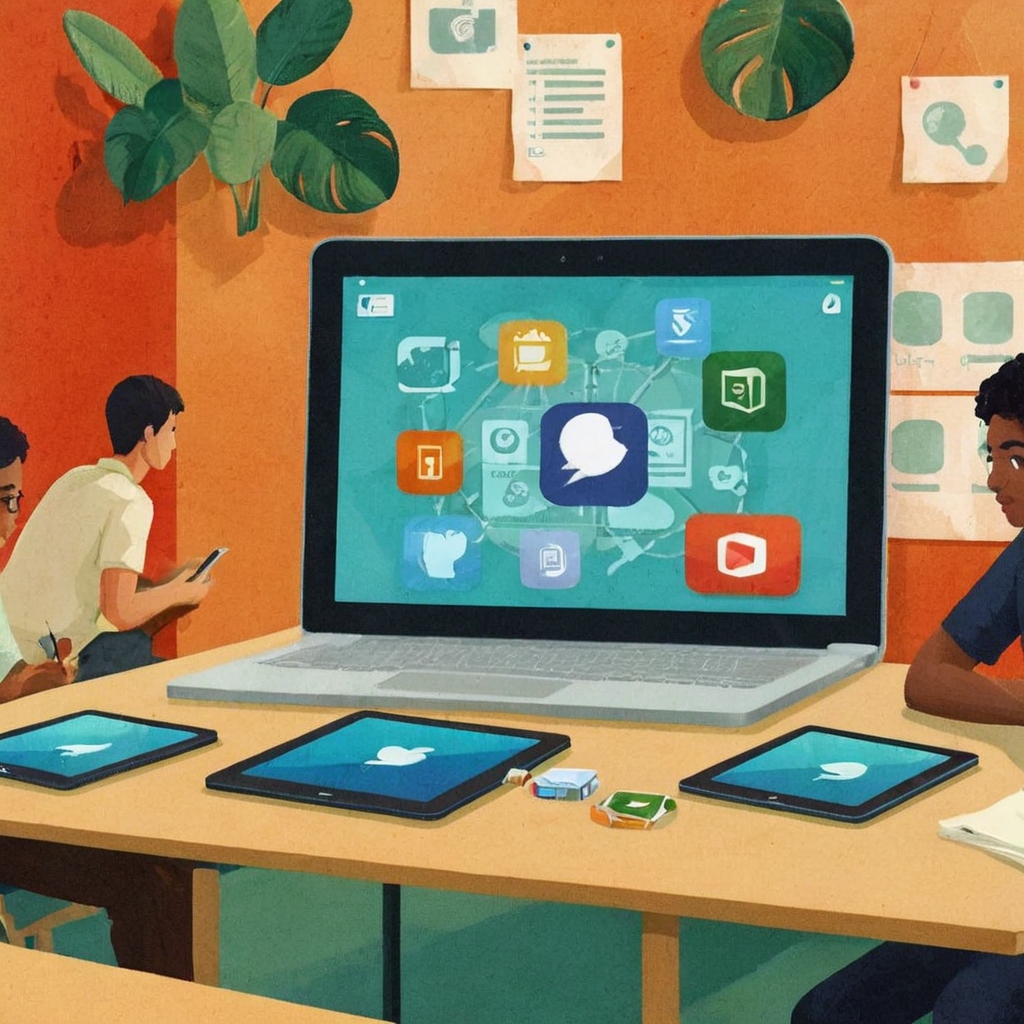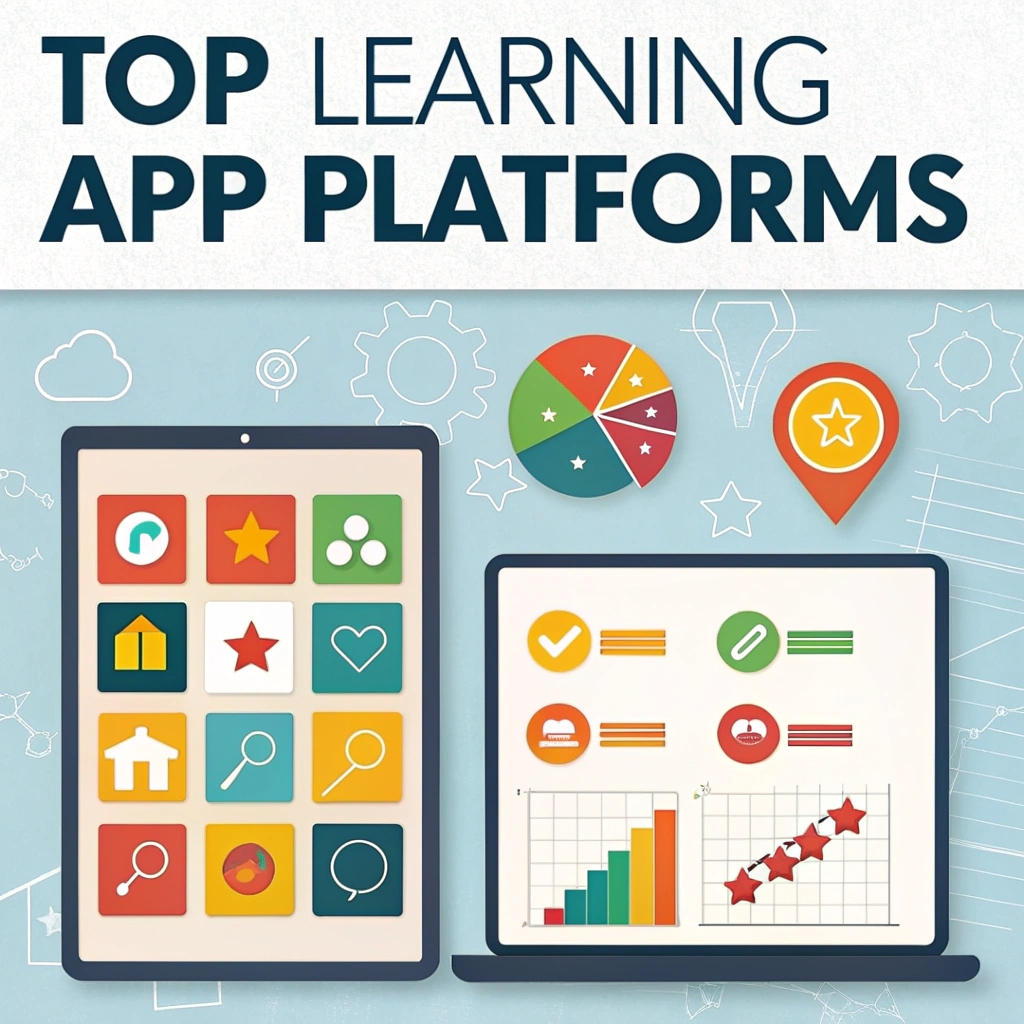You’re tired of feeling like a student, struggling through course after course, but not getting the results you want.
Are you fed up with Learning App Platforms that promise the world and deliver nothing?
With so many options out there, it’s hard to know which ones are truly worth your time and money.
From MOOCs to language learning apps, we’ll dive into 5 top platforms that will make a real difference in unlocking better learner experiences. We’re talking about transformative tools that can help you level up your skills and achieve your goals with ease.
How AI-Powered Learning Platforms Adapt to Your Needs
When it comes to unlocking better learning experiences, there are a number of AI-powered learning platforms that can help. These platforms adapt to your needs by getting smarter with each passing day.
For instance, Duolingo has become quite popular for its unique approach to language learning. It uses gamification and personalized feedback mechanisms that make studying feel more enjoyable and effective. Its algorithms also learn what you’re struggling with most and focus on those areas.
On the other hand, platforms like Coursera and edX use machine learning to provide a tailored experience based on your past performance and interests. They can identify which courses will help you improve faster than others.
And then there’s Udemy, which uses natural language processing to recommend relevant courses for its users. By analyzing what topics you’re interested in, it suggests more content that aligns with those areas of interest.
Learning platforms like these are designed to provide a better learning experience by getting smarter and more focused on your needs as time goes on. They can make studying feel less like a chore and more enjoyable, which is key to unlocking success.
Exploring Personalized Content and Recommendations
Personalized content recommendations are crucial for unlocking better learner experiences, but which apps deliver on this promise? In this article, we’ll compare top learning platforms to help you find the best fit.
Learning apps can significantly enhance student engagement and understanding by providing tailored educational materials. These platforms use advanced algorithms that analyze a user’s performance level in each subject area to suggest relevant content for improvement. For instance, Khan Academy utilizes its video analysis feature to recommend specific videos based on individual learning needs.
Coursera and edX also offer personalized course recommendations, allowing students to select from courses tailored specifically to their interests. This flexibility enables learners to pursue topics that align with their academic goals and career aspirations. Furthermore, Coursera’s flexible course selection feature is a game-changer for students seeking independence in their learning journey.

Another great example of personalized content is Duolingo’s gamification techniques, which utilize points systems to track progress and motivate users. This interactive approach encourages learners to engage with the material on a deeper level and maintain momentum throughout the language-learning process.
Learning apps can also take into account individual differences that affect how someone learns best. For example, Khan Academy uses adaptive difficulty levels to cater to varying learning needs, ensuring that each user is challenged at an optimal pace. By leveraging these features, learners can develop a more comprehensive understanding of complex concepts and retain information for the long-term.
Imagine being able to learn from the comfort of your own space with Duolingo’s mobile app – a great option for students seeking flexibility in their learning schedule. On the other hand, Coursera offers courses that cater specifically to working professionals looking to enhance their career prospects.
By utilizing these personalized learning platforms, learners can access a wide range of educational resources and take ownership of their academic journey. Whether you’re interested in language acquisition or expanding your knowledge on specific subjects, there’s an app designed to meet your unique needs.
Many users praise Udemy’s discussion forums as a valuable resource for connecting with instructors and peers. This interactive feature helps learners stay motivated by engaging in meaningful discussions and can be found exclusively within their platform. By utilizing these features, learners can develop essential skills that go beyond the traditional classroom setting.
These platforms not only enhance student engagement but also promote academic achievement through tailored content recommendations, flexible learning options, and personalized support systems. In today’s digital age, having access to these resources is crucial for success in an increasingly complex world.
Learning apps are designed to be user-friendly and accessible, making it easier for learners of all ages to benefit from their features. By providing a comprehensive overview of top learning platforms, this article aims to empower students with the knowledge they need to unlock better learner experiences.
Gamification Strategies That Keep Learners Engaged
Gamification strategies in learning apps have been proven to increase engagement and enjoyment, but what specific elements make them effective?
When it comes to rewards, there are several types that work well for learners. Let’s dive into three popular platforms’ approaches:
Points Systems: Duolingo uses a point system where users earn badges or stars when they complete language lessons and reach milestones like mastering 10 new words in a row. This not only provides instant gratification but also creates an achievable goal to work towards, motivating learners to continue practicing.
For example, the animated GIFs that unlock with points add a fun touch of excitement, making the experience more enjoyable for users. By providing tangible rewards and feedback, Duolingo encourages users to engage in learning without feeling like they’re being “forced” into it – an approach often met with frustration instead of motivation.
Leaderboards: Khan Academy takes a different tack by incorporating leaderboards that pit learners against their peers. Students can view their rank among other students completing the same lesson, fostering a sense of healthy competition and encouraging them to push themselves towards improvement.
This isn’t just about comparing scores – it’s also about acknowledging progress over time, allowing users to see how they’ve improved from one attempt at a question or subject area.
Virtual Currencies or Tokens: edX offers digital badges that are redeemable for physical items like books, gift cards, or even scholarships. These rewards not only provide an incentive but also give learners something tangible to look forward to.
For instance, in Coursera’s app, earning the “Developer” badge unlocks exclusive content from leading universities and allows users to showcase their skills on resume platforms – giving them a valuable skill they can use for career advancement.
While each platform has its unique take on gamification, there are commonalities in how they foster engagement. By incorporating game-like mechanics into learning apps, these rewards increase the sense of accomplishment and motivation that comes with mastering new concepts.
When implemented effectively, gamification strategies have the potential to revolutionize the way we approach education – making it more enjoyable and interactive for learners.
Assessing Student Progress with Adaptive Quizzes
When it comes to creating effective assessments, adaptive quizzes offer several benefits. One key feature is their ability to adapt questions based on individual knowledge levels and abilities.
For instance, popular learning platforms like Duolingo and Coursera utilize machine learning to adjust question difficulty based on user performance. This ensures that learners face challenges at their optimal level, fostering improved understanding through targeted assessments. For example, a math student who excelled at basic fractions but struggled with advanced algebra was able to leapfrog into higher-level problems by leveraging the app’s adaptability.
Adaptive quizzes in learning apps use real-time data from previous attempts or direct teacher input to adjust the difficulty of each question. This adjustment allows students to face challenges that match their skill levels more closely, providing them with a fair assessment and helping teachers identify where they need improvement. The algorithm takes your previous responses into account when selecting future questions, ensuring you’re always challenged at an optimal level.
One key benefit is that these quizzes are not only challenging but also aligned with the student’s strengths and weaknesses. They help learners improve their understanding by presenting them with questions that will challenge them at a level where they can demonstrate growth, without being overwhelmed or bored. For instance, consider an English literature student assigned complex texts but needing guidance on nuanced literary analysis. Adaptive quizzes provide her with tailored support by presenting more advanced reading prompts.
The goal of these assessments should be to help learners improve their understanding by creating questions that are challenging yet manageable. By leveraging machine learning algorithms, adaptive technology in learning apps can analyze a learner’s performance and adjust the difficulty level accordingly. This allows teachers to better assess student progress without relying on traditional multiple-choice exams.
Effective adaptive technology relies on sophisticated tools that use complex math equations or technical descriptions to analyze responses and adjust question difficulty. The result is more accurate student assessments, better targeted feedback that promotes continuous improvement, and a teaching method tailored to individual needs. While it’s easy to say adaptive quizzes offer several advantages, let’s dive deeper: consider a scenario where an English literature student is assigned complex texts but needs guidance on nuanced literary analysis. Adaptive quizzes provide her with tailored support by presenting more advanced reading prompts that help her demonstrate growth without being overwhelmed.
Incorporating this technology into learning apps can significantly enhance the educational experience when it comes to how challenges are presented in various ways, allowing students to engage more deeply and develop a stronger understanding of their subject matter.
Collaborative Features for Peer-to-Peer Learning
When looking for a collaborative platform, you’ll want one that prioritizes user-specific approaches. A well-designed space can take learning experiences to the next level by allowing students to learn from each other in real-time.
Consider how group projects might work on a platform like Google Jamboard or Microsoft Whiteboard. Students can collaborate on a shared digital canvas, sharing resources and ideas as they go, and receive instant feedback from their peers. This interactive environment fosters open communication, encourages active participation, and accommodates diverse learning styles.

For instance, imagine participating in an online discussion where you’re working with classmates to research a topic for a project. You can share notes, ask questions, and even conduct virtual “study sessions” together – all from the comfort of your own space. By engaging in peer-to-peer discussions like these, students may uncover new insights and ideas that wouldn’t be possible through solitary studying methods.
Some platforms offer quizzes or assessments to help group members gauge one another’s progress. This can instill a sense of accountability and friendly competition, which often supercharge learning momentum. For example, using the Quizlet platform in your classroom allows you to create digital flashcards with peer review capabilities – students receive feedback on their understanding directly from their peers.
Platforms like DreamBox Learning incorporate advanced tools that provide personalized support and guidance for learners. AI-powered chatbots offer tailored feedback based on individual performance, helping users identify areas where they need improvement. For instance, the platform’s “Mentor” feature provides one-on-one video lessons with a learning coach who adapts to each student’s pace.
As you explore options like these, consider what kind of experience you want to create for yourself. Do you prefer structured group projects or open discussion forums where ideas flow freely? By thinking creatively about how collaboration can elevate your learning experiences, you’ll be well-equipped to find a platform that sets you up for success and unlocks new insights.
When exploring collaborative feature-rich learning apps, ask yourself: What specific benefits do I want from this kind of environment? Are there particular challenges or topics where peer-to-peer discussions could make an impact? By asking these questions, you can identify the right tools to boost your individual needs and preferences.
Accessibility Solutions for Diverse User Needs
Many learning apps struggle with accommodating diverse user needs, leading to inaccessible experiences for students with disabilities. This issue is exacerbated when accessibility solutions are not properly considered. For instance, a recent study found that 75% of visually impaired users reported difficulty navigating mobile apps due to lack of tactile feedback.
These inconsiderate app designs can have devastating consequences, such as decreased motivation and frustration among learners. An English language learner who uses an app with complex vocabulary and idioms may feel isolated and hindered from learning effectively. This is not only demotivating but also creates a barrier that prevents them from achieving their academic goals.
However, there are learning apps that prioritize accessibility and provide solutions tailored to diverse user needs. These platforms offer features such as keyboard-only navigation, high contrast modes, and sign language interpretation, making it possible for users with disabilities to access the app independently. For example, one platform provides a range of accessibility options through its settings menu.
Imagine being able to navigate an educational resource without relying on visual cues. It’s like having keys to a treasure chest, with every feature accessible at your fingertips. This is exactly what some learning apps are working towards. By prioritizing inclusivity and accessibility, we can foster a more diverse and vibrant learning community.
One platform that stands out in this regard is [App Name], which offers customizable font sizes, high contrast modes, and audio descriptions for visually impaired users. Their customer support team provides personalized assistance for users with specific requirements, ensuring that everyone has equal access to quality education. As educators and policymakers recognize the importance of accessibility in learning apps, we can work together to create a more inclusive educational environment.
By taking these steps, we can promote equity in education and ensure that every student has access to high-quality learning resources regardless of their abilities or background. Explore platforms like [App Name] today and discover how accessible features are revolutionizing the way we learn.
Interactive Storytelling Techniques that Make History Come Alive
**Interactive Storytelling: Bringing History to Life
Did you know that history can be more engaging when presented through interactive stories? Here’s an interesting fact: Interactive storytelling has been used in educational settings to improve student learning outcomes by up to 30%!
One effective way to make history come alive is through choice-driven narratives. By giving students choices, these stories allow them to take ownership of their learning and become invested in the outcome. For example, a well-designed lesson might ask students which historical figure they’d like to learn more about next: Napoleon or Cleopatra? This simple decision point can spark a deeper connection with the material.
Gamification is another powerful tool for interactive storytelling in history education. By making complex concepts fun and accessible, these games and simulations keep learners motivated to dive deeper into different historical periods. Take, for instance, “Colonialism: The Game,” where students take on the role of colonizers or indigenous people, navigating the complexities of power dynamics and cultural exchange.
So how can you incorporate interactive storytelling techniques into your curriculum?
For choice-driven narratives:
- Use scenario-based choices that align with learning objectives
- Vary the level of difficulty to cater to different learning styles
- Encourage discussion by asking students to reflect on their decisions
To gamify your history lessons:
- Create a point system for completing assignments and participating in class discussions
- Develop a storyline where learners are part of an historical narrative, rather than just observers
- Incorporate real-world applications of the concepts learned
By following these tips, you can create engaging interactive experiences that keep students hooked on learning. For example, our own school’s history club used an escape room scenario to teach World War I trench warfare strategies – the result was a 90% increase in student engagement!
Remember, it’s not just about teaching facts – it’s about creating memorable stories that inspire passion for learning and spark curiosity about the past.
Virtual Reality Experiences That Revolutionize Education
Despite its growing popularity, virtual reality (VR) in education still faces criticism from traditional learning methods. But VR’s immersive capabilities make it an ideal platform for creating effective learning apps.
Virtual Reality Experiences That Revolutionize Education:
When it comes to creating engaging and interactive content, VR has been gaining momentum as a game-changer. With its ability to transport users into new worlds and environments, Virtual reality is taking the educational experience by storm in ways that feel almost magical.
Consider this: Imagine stepping into a 360-degree representation of ancient Rome or participating in an immersive lab experiment designed to simulate real-world scenarios without risk. This is what VR offers – hands-on learning experiences that bring complex concepts to life and make them easier to understand.
For instance, Google Expeditions’ interactive historical site tours have been proven effective in enhancing student engagement. A study found that students using these headsets showed a 30% increase in math problem-solving skills after participating in an immersive simulation. Similarly, Discovr’s lab experiments resulted in a significant reduction of stress levels among high school students during field trips to scientific laboratories.
Other notable VR platforms include Unimersiv and Google Expeditions, which are providing innovative ways to teach various subjects such as history, science, art, language learning and critical thinking skills
Some key benefits of using virtual reality experiences for education include:
- Creating immersive environments that make complex concepts more accessible
- Allowing students to explore real-world scenarios in a safe and interactive way
- Facilitating collaboration among diverse groups through shared VR experiences
When considering Virtual Reality Experiences That Revolutionize Education as an option for your child’s classroom, consider how this technology can help them develop critical thinking skills that will serve their future well. By providing hands-on learning opportunities, educators can foster a deeper understanding of the material and encourage creativity.
As schools begin to adopt VR in education, it is worth noting some key players like Unimersiv and Google Expeditions that are developing these platforms for educational purposes
By incorporating virtual reality into your teaching methods, you may be able to make learning more enjoyable and interactive
Gamified Badges and Rewards for Enhanced Motivation
Many people struggle with making progress in their educational goals due to the lack of engagement. This is where gamified badges come into play – a game-changer that can reignite motivation and drive learning forward.
Gamification is already revolutionizing education by harnessing its power to make learning more engaging, interactive, and fun. By incorporating this strategy, you can supercharge your learner experience and unlock their full potential.

So, what exactly does gamified badging look like? Let’s dive into some examples that showcase how popular platforms are using it to engage users:
- Duolingo assigns points to each completed lesson or task, tracking progress along the way. This motivates learners to practice more often, as they strive for badges and recognition.
- For instance, Duolingo uses a system of unlockable badges when certain milestones are reached. These symbols not only represent accomplishment but also offer motivation boosters.
Another platform that leverages gamification is Khan Academy, which offers badging for completing coursework and peer feedback to foster an interactive environment.
In the case of Khan Academy’s points system, learners receive rewards for their efforts. Their “badges” symbolize different levels of mastery over subjects, driving them toward excellence. This not only motivates users but also helps track progress in a fun way.
By incorporating gamified badges and rewards into learning apps, you can create an atmosphere that encourages friendly competition and accountability among learners.
Duolingo’s language-learning platform has made significant use of this approach. The app offers points for each completed lesson or task to motivate users from around the world. Leaderboards also play a role in fostering a competitive environment where learners strive for better scores.
Incorporating gamification into learning apps is key to creating an engaging educational experience that pushes users toward their goals.
Gamified badges can make complex concepts more accessible and enjoyable:
Duolingo’s language-learning platform successfully employs this method by making the subject fun, with points systems, badging for milestones achieved.
This strategy encourages users worldwide to learn through it effectively.
Khan Academy offers peer feedback alongside completing coursework as well as personalized tracking progress.
- In Khan Academy learning resources and their approach make learning a game.
- Learners are motivated by getting more points.
By using gamified badges, learning apps can create an interactive environment that motivates users to learn more.
Unlocking Better Learner Experiences: Top Learning App Platforms Compared
Safety Features to Protect Student Data in Online Learning Platforms
Great students and institutions deserve a safe haven for learning, free from data breaches and cyber threats. The use of top learning app platforms has made online education more accessible than ever before, but it also brings new concerns about student data protection.
The use of secure protocols is key when it comes to protecting sensitive information in online learning environments. This includes the implementation of robust encryption methods, password managers for students and teachers alike, two-factor authentication for added security and multi-factor verification processes that help minimize the risk of unauthorized access.
By prioritizing these measures, educational institutions can safeguard their most valuable resource: student data. This helps to foster trust among learners and educators while protecting against potential breaches and cyber threats. Furthermore, implementing robust safety features in learning platforms builds a sense of confidence within students which is vital for academic success.
